Site of Mirokuji Temple
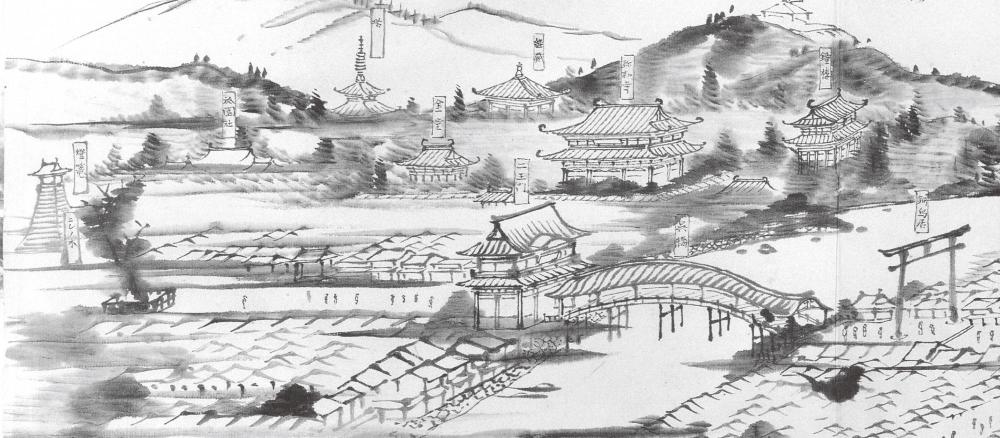
Mirokuji Temple depicted in The Illustrated Diary of Minomushi Sanjin (1864)
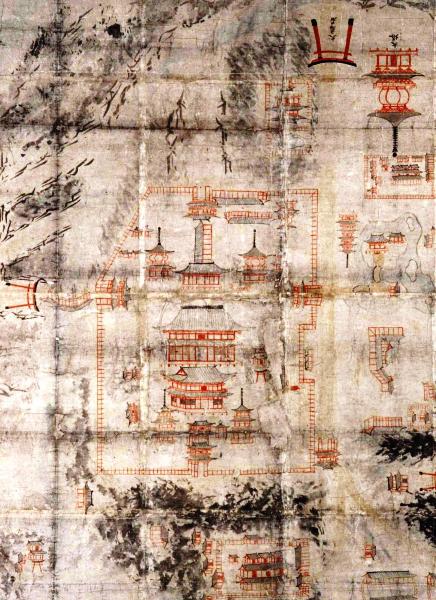
Mirokuji Temple on an illustrated map
(early fifteenth century)
For many centuries, part of the Usa Jingu shrine grounds was occupied by a large Buddhist temple called Mirokuji, the remains of which can still be seen between the Kurehashi Bridge and Yasaka Jinja Shrine. Throughout much of its history, the temple was an important part of the Usa Jingu complex and enjoyed the support of the imperial family, nobility, and warrior clans, allowing it to become a prominent political and economic force in its own right.
Mirokuji owned vast amounts of land and exerted influence not only in Kyushu, but throughout the entire country. Historical records and maps show that the temple had dozens of structures, including worship halls, pagodas, and living quarters, spreading along both sides of the present-day Nishi Sando Path. The Kondo (Main Hall) was dedicated to Yakushi Buddha, the deity of medicine and healing, and the Kodo (Lecture Hall) enshrined Miroku, the deity expected to appear in this world in the distant future as the next Buddha.
Main Buddhist Temple in the Usa Jingu Shrine-Temple Complex
Mirokuji originated from an older temple called Mirokuzen’in, which was moved to the plain between Mt. Ogura and the Yorimo River in 738, not long after the first sanctuary of Usa Jingu was built on the mountain in 725. Mirokuji soon evolved into one of the earliest examples of a jinguji, a Buddhist temple closely connected to a Shinto shrine and usually located on or near the shrine grounds. Thus, by around the eighth century Usa Jingu became a religious complex that reflected the syncretic fusion of Shinto and Buddhism (shinbutsu shugo). While fulfilling such duties as dispatching monks for rites held at Usa Jingu, Mirokuji gradually developed into a model syncretic temple while also gaining considerable influence. Over time, the Usa Jingu shrine-temple complex became the largest landholder in Kyushu through the shoen estate system, but by the eleventh century Mirokuji was able to grow independent by obtaining extensive shoen lands of its own. Nevertheless, the two religious institutions maintained a strong bond and continued to conduct Shinto rituals and Buddhist services together in a syncretic fashion.
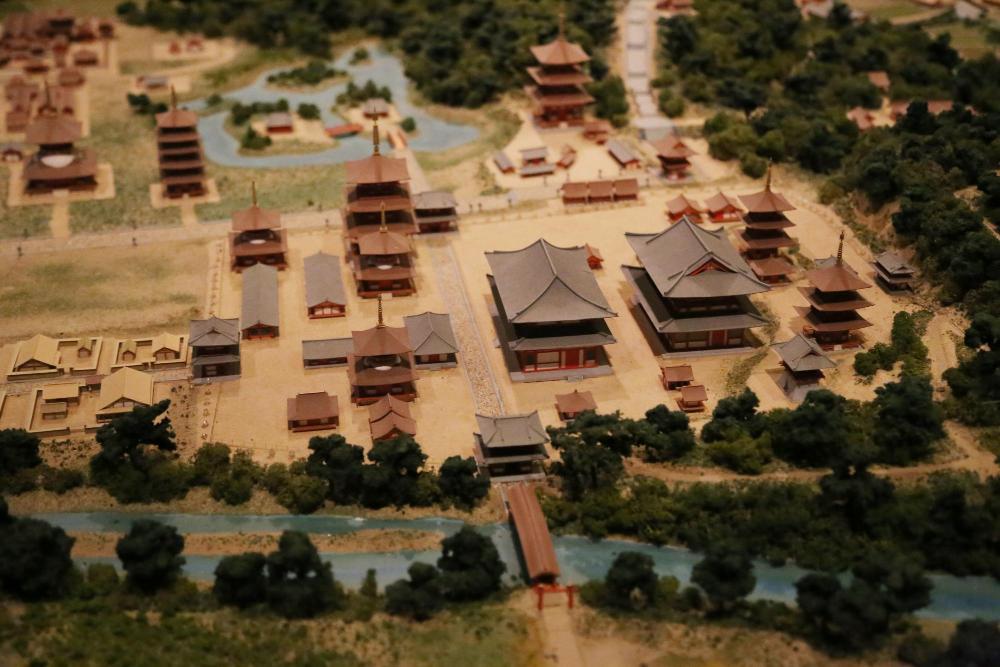
Miniature model of Mirokuji Temple (Oita Prefectural Museum of History)
Loss of Power and Final Years of Mirokuji
During the struggle for power between the Taira and the Minamoto clans in the twelfth century, the head priest of the Usa Jingu complex chose to side with the Taira. Amid the conflict, in 1184 both Usa Jingu and Mirokuji were burned down, and the Taira were defeated a year later, in 1185. Even though the complex was subsequently rebuilt, the power of Mirokuji began to wane. The temple gradually lost the lands it owned, the number of buildings dwindled, and by the mid-nineteenth century no more attempts were made to revive it. In 1868, the Meiji government issued an order to separate Shinto and Buddhism, and all Buddhist structures and objects of worship were removed from Usa Jingu by 1871. The former Mirokuji grounds now contain the shrine offices, the Chokushi Saikan Hall, and beautiful gardens, with only the foundation stones left as a reminder of the temple’s past glory. The most valuable statues of Mirokuji, however, were saved: the large statue of Miroku is now on display at Gokurakuji Temple nearby, and the statue of Yakushi Buddha is enshrined at Daizenji Temple across the river.
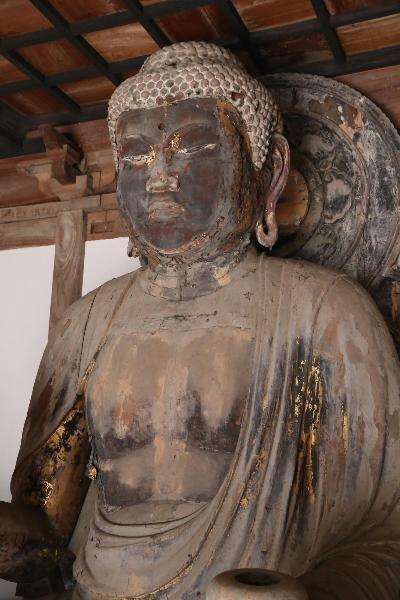
Statue of Yakushi Buddha
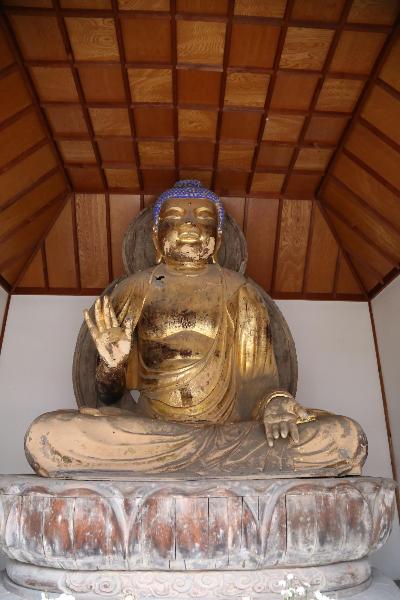
Statue of Miroku (Buddha of the Future)
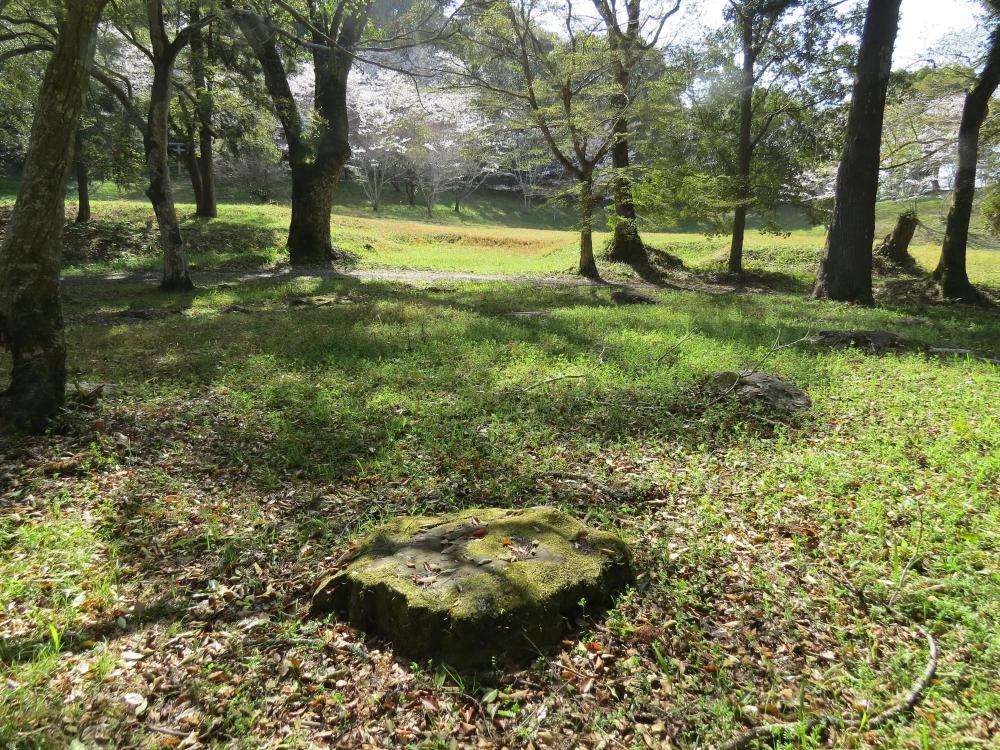
Foundation stones of Mirokuji Temple

This English-language text was created by Japan Tourism Agency.
- ページに関する評価
-







更新日:2024年03月18日